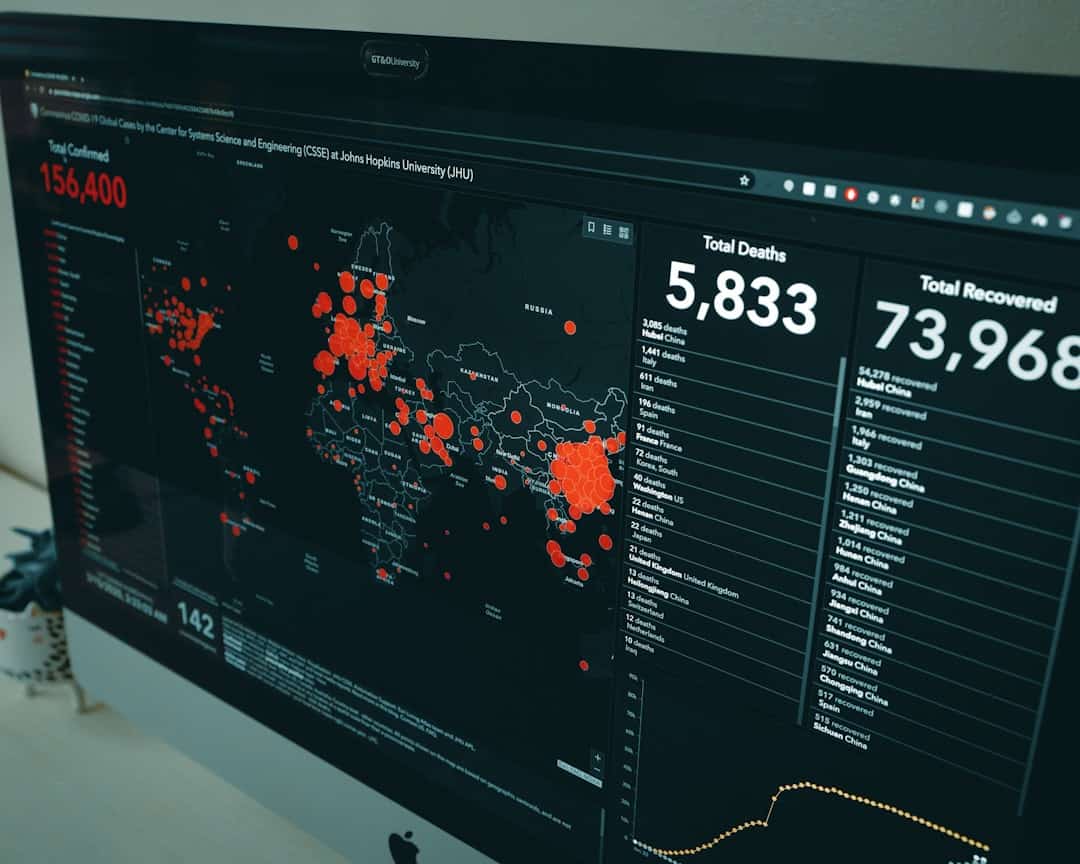A specialized area of machine learning called “deep learning AI,” or “deep learning artificial intelligence,” makes use of artificial neural networks to analyze and comprehend intricate data patterns. With the help of this sophisticated AI, machines are now able to learn from their mistakes & carry out tasks that have historically required human intelligence. Due to its ability to process large volumes of data, recognize speech & images, & make predictions and decisions, deep learning artificial intelligence has become more and more popular in recent years. Neural networks—which are based on the architecture & operations of the human brain—are the cornerstone of deep learning artificial intelligence. These networks are made up of networked nodes, sometimes known as “neurons,” which process and send data.
Key Takeaways
- Deep learning AI is a subset of artificial intelligence that mimics the workings of the human brain to process data and make decisions.
- Deep learning AI is being used in various industries such as healthcare, finance, retail, and manufacturing to improve efficiency, accuracy, and decision-making processes.
- The impact of deep learning AI on traditional business models includes the automation of tasks, personalized customer experiences, and the creation of new business opportunities.
- Challenges and limitations of implementing deep learning AI include the need for large amounts of data, the potential for bias in algorithms, and the requirement for specialized expertise.
- The future of deep learning AI in revolutionizing industries includes advancements in natural language processing, image recognition, and predictive analytics, leading to further integration into everyday life and business operations.
By training and learning from data, deep learning artificial intelligence algorithms are able to recognize patterns and make decisions without the need for explicit programming. Deep learning AI is a flexible tool suitable for a wide range of sectors and domains because of its capacity to learn from data and keep getting better. Progress in Healthcare.
Deep learning AI is being used in the medical field to analyze medical imaging, diagnose diseases, find new drugs, and provide individualized treatment plans. Deep learning AI algorithms can find patterns and abnormalities in massive amounts of medical data that human clinicians might miss, which can result in more precise diagnosis and treatment recommendations. Security & Financial Services.
Deep learning artificial intelligence (AI) is being used in the financial services sector for chatbots for customer support, risk assessment, algorithmic trading, and fraud detection. Through the examination of transactional data and customer interactions, deep learning artificial intelligence algorithms are able to detect unusual and suspicious patterns that could be signs of fraud. Also, using intricate patterns in financial data, deep learning AI is able to assess market trends and make trading decisions in real time. Automobile Autonomous Systems. Deep learning AI is utilized in the automotive sector for predictive maintenance, autonomous driving systems, and safety features in cars.
| Industry | Impact |
|---|---|
| Healthcare | Improved disease diagnosis and personalized treatment |
| Finance | Enhanced fraud detection and risk management |
| Manufacturing | Optimized production processes and predictive maintenance |
| Retail | Enhanced customer experience and demand forecasting |
Deep learning AI algorithms are able to identify objects and obstacles in the surrounding environment, make decisions about driving in real time, and anticipate when maintenance is required to avoid malfunctions & accidents by analyzing data from sensors and cameras. Deep learning artificial intelligence has a huge & broad impact on conventional business models. Deep learning AI is helping businesses across a wide range of industries to develop new products & services that were previously unattainable, enhance decision-making procedures, and automate monotonous tasks. This could put conventional business models to the test & open up fresh possibilities for development and innovation. Utilizing and analyzing massive amounts of data is one of the main ways that deep learning AI is changing conventional business models. Because of this, businesses can learn a great deal about consumer behavior, industry trends, and operational effectiveness.
Businesses can make better decisions and create focused strategies that promote corporate growth by utilizing deep learning AI to analyze data. Automation of previously done by humans procedures and tasks is another way that deep learning AI is affecting traditional business models. Cost reductions, improved productivity, and more effective operation scalability are possible outcomes of this. Deep learning AI-powered chatbots, for instance, can handle common questions and support requests in the customer service industry, freeing up human agents to concentrate on more intricate and valuable interactions. When using deep learning AI, there are a lot of advantages & opportunities, but there are also obstacles and restrictions to take into account.
To effectively train deep learning AI algorithms, a significant amount of high-quality data is required, which presents a significant challenge. Inadequate data could prevent the algorithms from identifying precise patterns & producing trustworthy forecasts. Deep learning AI algorithm training presents another difficulty due to its complexity & computational demands.
Deep learning model training frequently calls for specialized hardware and a large amount of processing power, which can be expensive and time-consuming. Also, optimizing & fine-tuning deep learning models can be difficult and require knowledge of data science & machine learning. Concerns about the possible effects of deep learning AI on society and ethical issues accompany technical difficulties. For instance, there are worries about the fairness and bias of deep learning AI algorithms, as well as the possibility of job displacement as automation spreads.
Ensuring the responsible & ethical implementation of deep learning AI requires companies and policymakers to tackle certain challenges and limitations. Deep learning AI has enormous potential to completely transform industries all over the world in the future. Deep learning artificial intelligence has many potential uses, which will only grow as data becomes more accessible and technology develops. With its ability to analyze genetic data and create individualized treatment plans, deep learning AI in healthcare has the potential to completely transform personalized medicine. With the ability to provide virtual try-on experiences, personalized product recommendations, & predictive inventory management, deep learning AI has the potential to completely change the shopping experience for customers.
Retailers can increase customer satisfaction & create more targeted marketing campaigns by analyzing customer behavior and preferences. Predictive maintenance, enhanced quality control, and production process optimization are all possible in the manufacturing sector with deep learning AI. Manufacturers can lower maintenance costs and downtime by anticipating possible problems and identifying them early on through the analysis of sensor data from machines and equipment. Enhancing Analysis of Medical Imaging in Healthcare.
Using deep learning AI for medical imaging analysis is one prominent example. With an accuracy level on par with dermatologists, a deep learning algorithm developed by Stanford University researchers can now diagnose skin cancer. Better patient outcomes could result from this technology’s improved early detection and treatment of skin cancer.
Finance: Improving the Detection of Fraud. AI for deep learning has been effectively incorporated by Capital One into its fraud detection systems in the financial services sector. Capital One has been able to detect fraudulent activity more precisely and quickly than it could have with conventional methods by employing deep learning algorithms to evaluate transactional data in real time. Automotive: Driving Autonomously Is Being Revolutionized. Tesla has incorporated deep learning artificial intelligence into its systems for autonomous driving in the automotive sector.
Tesla’s vehicles are able to identify objects, pedestrians, and other vehicles on the road in real-time by processing data from cameras and sensors using deep learning algorithms. Regulations & ethical issues must be taken into account as deep learning AI develops & spreads throughout a variety of industries in order to assure responsible application. The possibility of bias in deep learning AI algorithms is one ethical issue.
These algorithms may generate biased results that negatively affect particular groups of people if they are trained on biased or unrepresentative data. The possible effects of automation on employment and jobs are a further ethical concern. Deep learning AI may eventually replace humans in some industries as it grows more adept at automating tasks that they once handled. Companies and legislators should think carefully about how to retrain and reskill employees who might be impacted by automation.
Strict rules are required regarding the application of deep learning artificial intelligence across a range of sectors. Regulations pertaining to data security, privacy, accountability, & openness are included. Businesses that use AI with deep learning should be open about how their algorithms operate and how they use data to inform choices.
Finally, by facilitating automation, enhancing decision-making procedures, & opening up new avenues for creativity, deep learning AI has the potential to completely transform a variety of industries worldwide. When putting these technologies into practice, there are a number of obstacles & restrictions to take into account, such as the requirement for substantial volumes of high-quality data, technical complexity, moral dilemmas, and legal requirements. In order to guarantee that deep learning AI is applied responsibly and ethically, it is critical that businesses & legislators address these issues.
If you’re interested in the intersection of artificial intelligence and virtual reality, you may want to check out this article on virtual reality (VR) and its potential applications in the metaverse. As deep learning AI continues to advance, it’s important to consider how it can be integrated into immersive virtual environments to enhance user experiences and interactions.
FAQs
What is deep learning AI?
Deep learning AI is a subset of artificial intelligence that uses neural networks with multiple layers to analyze and learn from data. It is designed to mimic the way the human brain processes information and is used for tasks such as image and speech recognition, natural language processing, and decision making.
How does deep learning AI work?
Deep learning AI works by using algorithms to process data through multiple layers of neural networks. Each layer extracts increasingly complex features from the input data, allowing the system to learn and make predictions or decisions based on the patterns it identifies.
What are the applications of deep learning AI?
Deep learning AI has a wide range of applications, including image and speech recognition, natural language processing, autonomous vehicles, healthcare diagnostics, financial forecasting, and recommendation systems. It is also used in industries such as manufacturing, retail, and entertainment.
What are the benefits of deep learning AI?
Some of the benefits of deep learning AI include its ability to process large amounts of data quickly, its potential for making more accurate predictions and decisions, and its adaptability to different types of tasks and industries. It also has the potential to automate repetitive tasks and improve efficiency.
What are the challenges of deep learning AI?
Challenges of deep learning AI include the need for large amounts of labeled data for training, the complexity of designing and optimizing neural networks, and the potential for bias in the data and algorithms. It also requires significant computational resources and expertise to develop and deploy effectively.











Leave a Reply